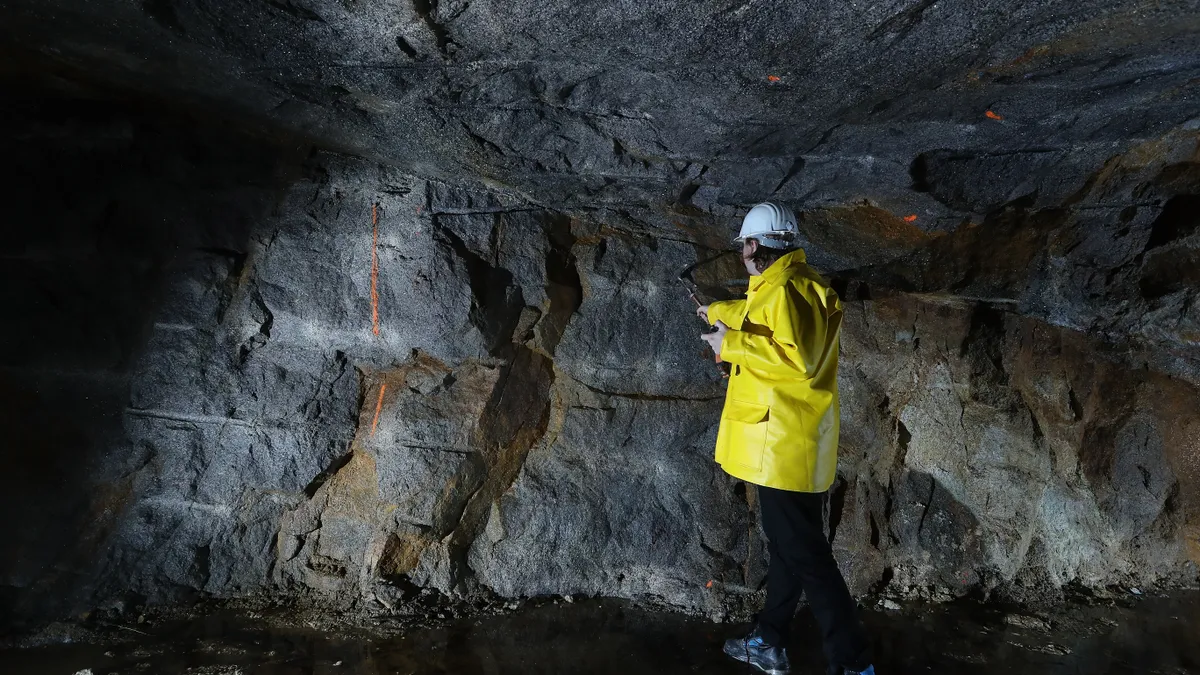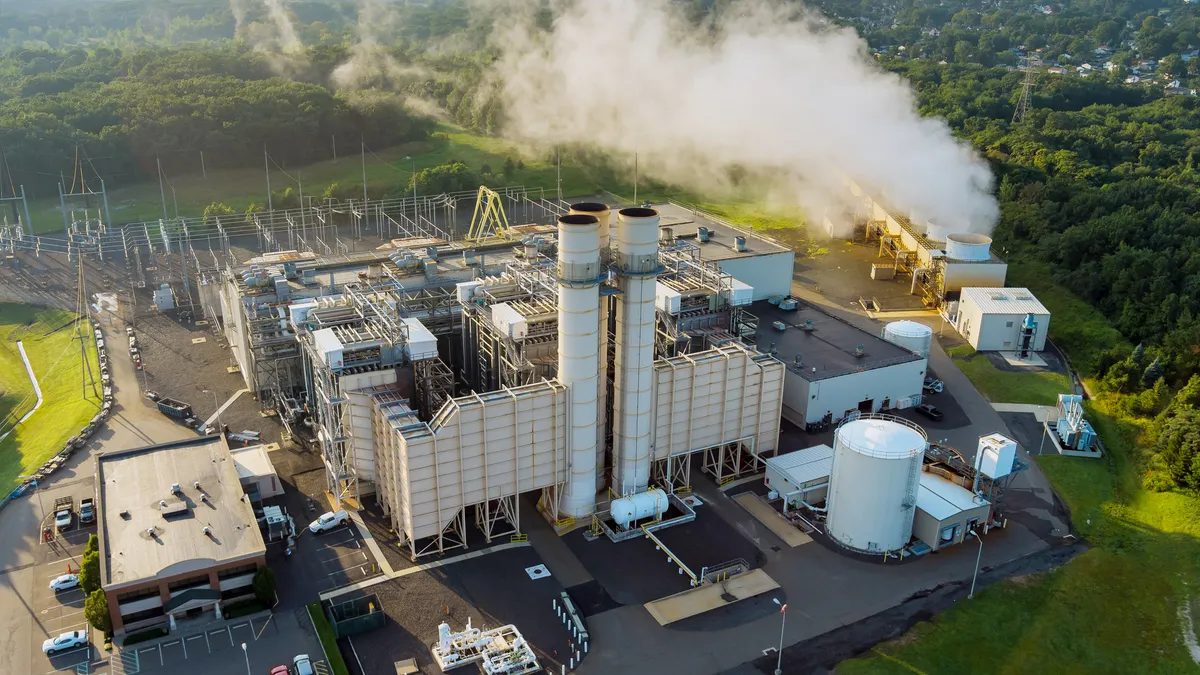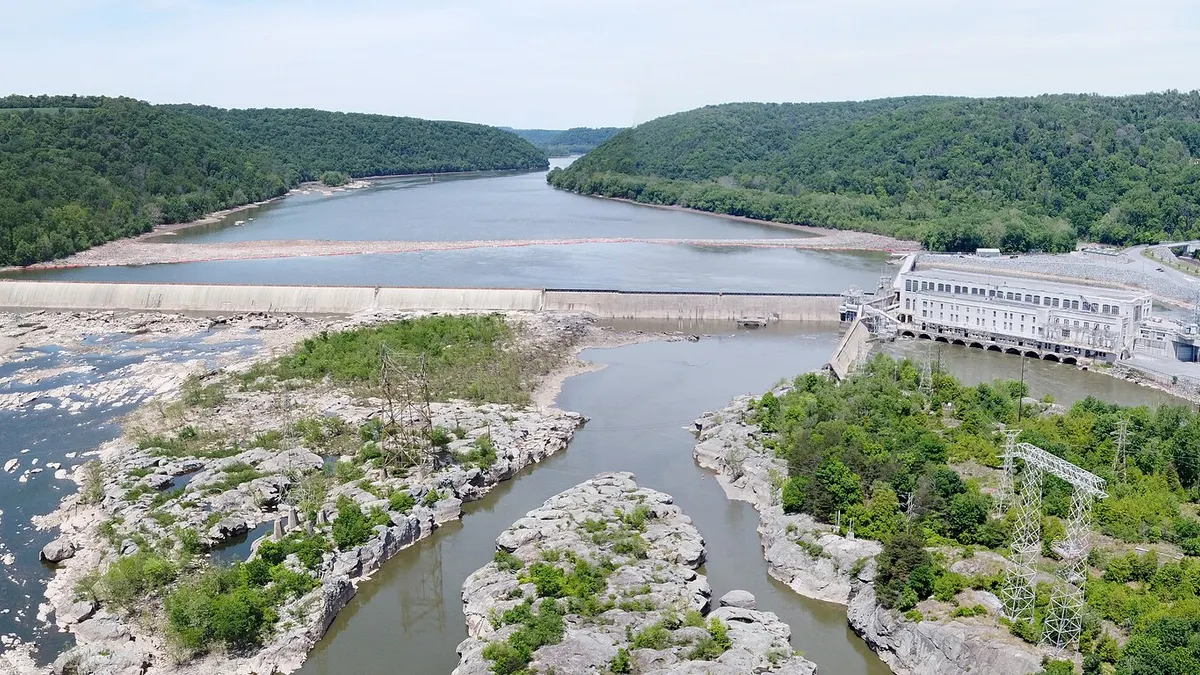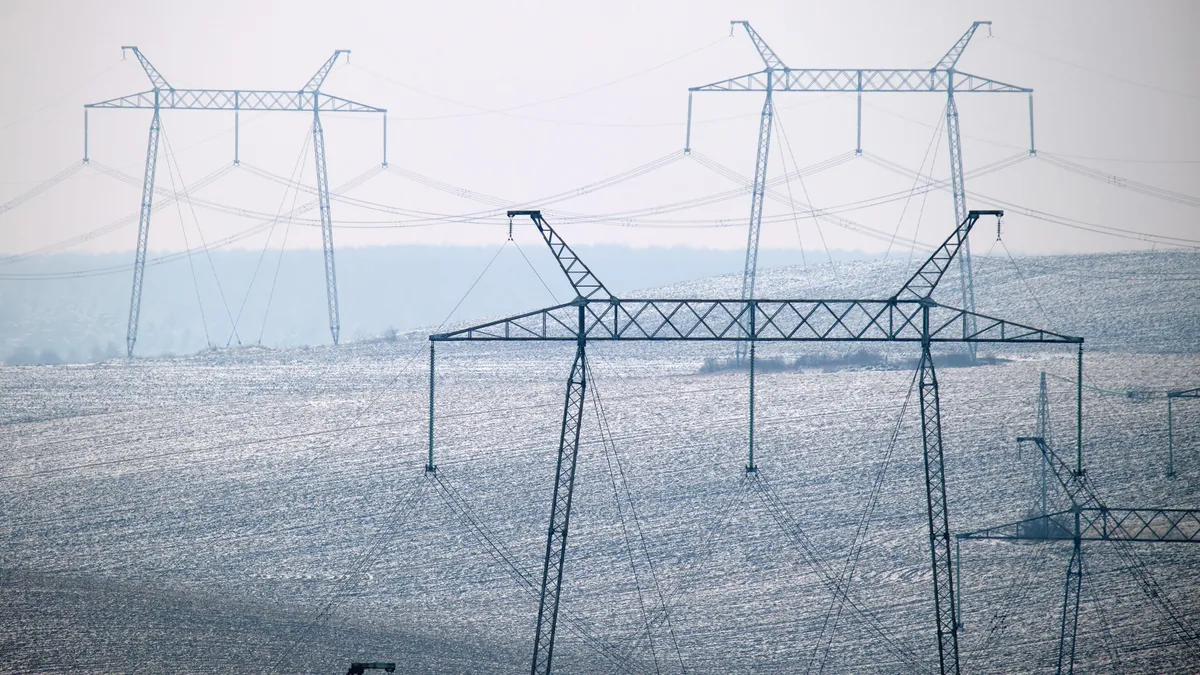For many American businesses — and consumers — the onset of COVID-19 was an unexpected wake-up call as supply chains collapsed and store shelves emptied. But potential for supply-chain logjams existed before the pandemic.
The International Energy Agency issued a report last month that IEA Executive Director Fatih Birol said revealed a "looming mismatch between the world's strengthened climate ambitions and the availability of critical minerals that are essential to realizing those ambitions." This isn't exactly new information, according to Jordy Lee, program manager of the Supply Chain Transparency Initiative at the Colorado School of Mines' Payne Institute for Public Policy. Experts have known the U.S. faced a minerals shortage for decades, if not longer, he said.
COVID-19, Lee said, alongside trade tensions between the U.S. and China, has finally brought the issue to the forefront, triggering political concern and an executive order from President Biden on supply chain research.
Preliminary results from the task force assembled by that executive order noted that demand for lithium will grow by more than 4,000% by 2040 if the world achieves its climate goals, and demand for graphite, also used to build large batteries, will grow by 2,500%. While the U.S. assumed certain dynamics of global markets to be inevitable, "especially the fear that companies and capital will flee to wherever wages, taxes and regulations are lowest," other countries made key policy decisions that allowed them to capture ever-greater market share of these budding industries, according to the June 8 preliminary report. As a result, while China controls 60% of the world's lithium production, U.S. battery production is expected to fall far short of its needs over the next few years.
"COVID kind of made people realize that even if you have the money and the demand for something, it doesn't mean you will get it," Lee said. "And that was kind of shocking for the U.S. because ... the U.S. can go anywhere in the world and has a ton of money. Why shouldn't it be able to source these things?"
But Lee and other experts agree there's some misconception about the nature of the problem: there is no global shortage of critical materials needed to produce renewable energy. The world has sufficient natural resources. The real challenge, they say, is figuring out how to extract those materials from the ground, and how to address the environmental, economic and social ramifications of doing so.
Not so rare earth metals
Substances such as rare earth metals are, Lee said, perhaps unfortunately named because they're not actually rare. These 17 elements, as well as other critical materials such as lithium, cobalt and even gold, are found in soils and rocks all over the world — they're just extremely difficult to to extract. Small amounts may be diffused across a wide area, and they may need to be separated from other elements, producing large amounts of waste materials.
There is reason to be concerned about materials supply chains, Lee said, but the availability of raw materials isn't one of them. "We've never, in the history of ever, stopped extracting a resource because we ran out of it," he said. "It's always been for social reasons, economic reasons or environmental reasons. Even with oil and gas."
The world may have ample natural resources, but that doesn't mean the U.S. won't suffer shortages of critical materials in the future, according to Robbie Diamond, founder, president and CEO of the nonprofit Securing America's Future Energy, or SAFE, which advocates for clean energy resilience. The materials might exist in nature, but the U.S. — and the world — need to achieve an unprecedented scale of production in a short period of time to enable the energy transition, he said.
The primary reason for this need is the materials-intensive nature of renewable energy, said Paul Saunders, president of the Energy Innovation Reform Project. The average electric car, according to IEA, requires six times the mineral inputs as a conventional car; an onshore wind farm will use nine times more mineral resources than a gas-fired power plant of the same size.
The problem isn't just lithium, Saunders said. The world also needs to produce far more copper, aluminum and silicon than is currently available. And while recycling is a good idea for improved sustainability down the road, it won't get U.S. industry out of its current predicament, Diamond said.
"It's estimated that we're going to need two times the amount of copper in the next 20 years, than we have used in the last 5,000 years of human history," Diamond said. "There's not enough to recycle."
Decline in U.S. mining and processing
At least part of how the U.S. came to face potential materials shortages in the clean energy sector, Lee said, can be explained by relatively recent history. With the rise of the environmental movement, mining fell out of favor culturally and politically in the 80s and 90s, Lee said. The U.S. Bureau of Mines closed in 1996.
China, instead, seemed to sense an opportunity to grow its economy and gain political prestige — and control — by expanding its own mining and processing capacity rapidly while other nations withdrew from the industry. China doesn't necessarily have a great wealth of mineral resources, Lee said, so they began to buy up mineral rights in other countries. When their mine-buying spree began to raise questions, they switched to offering to help other nations with mineral processing capacity.
It is this processing capacity that has proven especially critical to today's supply chains, Lee said. The U.S. can produce its own lithium — there's a good amount of lithium brine available for the taking in Nevada — but any lithium extracted in the U.S. must be shipped overseas for processing. Even if the U.S. built a lithium processing plant, it's not clear who would be qualified to run it — the U.S. has a mere few thousand students who study metallurgy each year, compared to the tens of thousands of metallurgy graduates in China, Lee said.
"We don't have the intellectual capital. We don't have the mining industry. We don't have processing," he said. "It's not really clear how the U.S. is going to compete."
Economic factors compound this, Saunders said. Americans may have expressed intolerance for offenses against labor and the environment since the social movements of the 70s and 80s began, but by pushing mining operations to other regions of the world, what the U.S. really demonstrated was its willingness to tolerate those very offenses elsewhere, Lee said. Much of the cobalt that goes into lithium-ion batteries comes from the Democratic Republic of the Congo (DRC), where it is often mined from small, poorly-regulated operations that employ or enslave children.
China, Lee said, didn't necessarily create this dynamic. It was simply ambitious and willing to get its hands dirty by working directly with the DRC. U.S. companies, in turn, were willing to buy product from China, taking advantage of low prices so long as they weren't directly connected with what was happening in the DRC.
Now, U.S companies have few incentives to develop the natural resources that exist outside these problematic dynamics. "If I were a mining company," Lee asked, "why would I want to get involved in critical minerals? Why produce a few thousand tons of cobalt when I have to compete with China that is using literal child slave labor and getting it for pennies on the dollar?"
Chinese businesses have also enjoyed a more stable policy environment than the U.S., according to Jason Burwen, interim CEO of the Energy Storage Association, which has encouraged more of the long-term investment required to support the large-scale manufacturing required to process and extract rare minerals.
"If you're going to place billions of dollars into manufacturing facilities, you want to know there are years and years of demand for your product," Burwen said. "In China, that's clear. Until recently, it's not been as clear in the U.S."
The challenge of China
There is nothing inherently problematic about global markets, or even about sourcing materials from China, Saunders said. But decades of allowing China to come to dominate the minerals processing and refining sectors has created the potential for political conflict.
China has used its control over minerals supply chains to retaliate against political rivals in the past, including against Japan in 2010, Saunders said. But U.S. lawmakers, Saunders said, seem more spooked by the shortages of medical supplies and PPE that occurred during COVID-19 when China imposed mandatory customs inspections for exports.
"It's clear there was a great deal of disruption across the board" during COVID, Saunders said. "The point about the PPE was not just that there were disruptions, but there was a perception that there was a possibility of malicious disruptions."
To avoid supply disruptions that could bring energy development to a halt, Diamond said he believes the U.S. must work with its allies to create global human rights and environmental standards that apply "from provenance to product" to create a more equal playing field.
At the same time, he said, the U.S. should begin to evaluate the 500,000 abandoned mines that already exist within its borders for the presence of rare and critical minerals. It may be necessary for the U.S. government to subsidize the creation of new facilities to process these materials, Diamond said.
"Ultimately our markets fail when it comes to certain things that are low margin, high capital," he said, "and the government is going to have to help business over the line."
But there is precedent for it, he said, dating back to World War Two and as recent as funding companies to manufacture PPE and ventilators for COVID.
The U.S. could try to stand up domestic manufacturing — which Burwen said may not be strictly necessary but would bring more of the job-related benefits of the energy transition home to the U.S. But it could also take the approach used to address the OPEC oil embargo in the 1970s by coordinating with allies to create more stable international markets and stockpiles of critical materials, according to Saunders. A third option could involve using government labs to accelerate research on how to replace rare earth materials — or to sidestep the issue entirely by investing in other forms of clean energy, such as advanced nuclear power, Saunders said.
The most effective policy, Saunders said, likely isn't a single approach, but a variety of tactics — including those generated by private markets themselves.
Free market solutions
Burwen, for his part, argued that the free market will inevitably address current supply chain challenges. As scarcity drives up prices, he said, U.S. companies will want to find a way to convert rapidly growing demand into dollars.
"I know that, for example, Steven Chu, the former secretary of energy, has apparently been working on a project associated with lithium recovery from the ocean," he said. "I heard that and I was fascinated because the only reason people would be thinking about that and doing that is because they see a massive demand for lithium."
Others, including Peter Perrault, senior manager of circular economy and sustainable solutions for Enel North America, also see reason to believe the free marketplace will eventually restore balance to materials supply chains. Consumer demand, Perrault said, is driving energy companies to address the economic and social impacts of their supply chains. Enel, he said, has determined it's not enough to just eliminate carbon emissions. To be the environmentally conscious company they strive to be, Enel must also curtail the impact of extracting minerals and other resources from the earth by reducing waste, increasing recycling and researching alternative materials with less environmental impact.
Still, Perrault noted a need for innovative policy to enable this free-market dynamic to fully take hold.
"We're driven by the sustainability ethos in the company, but there are some challenges that haven't been fully figured out," Perrault said.
One of those challenges, Lee said, is the opaque nature of materials supply chains. A company may want to try to calculate their carbon footprint, Lee said, but in reality, they likely have no idea where or how their raw materials were extracted because they don't buy copper from a mine. They buy it from suppliers who collected copper from multiple mines and melted it all down in the same vat to produce copper cathode, which is then sold to another supplier who makes copper wire and other copper-based products.
The same dynamic means mine companies have little incentive to establish environmental goals of their own, Lee said. Many do want to make good environmental decisions, he said, and there are cleaner processes that could be implemented. But why should they do that when the commoditized nature of materials means all copper sells for essentially the same price?
Policy initiatives to create greater supply chain transparency would go a long way toward enabling mine and metals companies to differentiate their products, offering green steel, copper or aluminum to downstream markets where demand for such options is already emerging, Lee said.
This, Diamond said, is what makes him feel optimistic about the current state of materials supply chains. Preliminary results from Biden's supply chain task force identified many of the same problems as industry and academic experts, and expressed strong support for reducing dependence on China. Private companies have expressed growing demand for green metals. Potential solutions exist. All that's left, Diamond said, is to put all the pieces together.
"We have everything at our disposal to make it happen," he said.






















